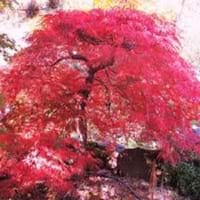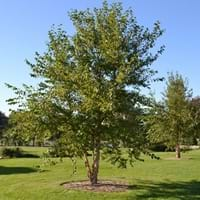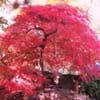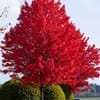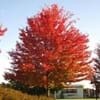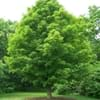Life Span
Perennial
Perennial
Origin
Eastern Asia
Mid-Atlantic United States, Southeastern United States, Central United States, South-Central United States
Types
Ever red , Crimson queen
not available
Number of Varieties
Not Available
Habitat
Shady Edge
bottomlands, Depression on prairies, ditches, Floodplains, Riverbanks, stream banks, Swamps
USDA Hardiness Zone
5-8
4-9
Sunset Zone
A3, 2a, 2b, 3a, 3b, 4, 5, 6, 7, 8, 9, 10, 12, 14, 15, 16, 17, 18, 19, 20, 21, 22, 23, 24
1a, 1b, 2a, 2b, 3a, 3b, 4, 5, 6, 7, 8, 9, 10, 11, 12, 13, 14, 15, 16, 17, 18, 19, 20, 21, 22, 23, 24
Habit
Arching/Fountain-shaped
Oval or Rounded
Flower Color
Red
Yellow, Brown
Flower Color Modifier
Bicolor
Bicolor
Fruit Color
Red, Green
Black
Leaf Color in Spring
Light Green, Lime Green
Green, Light Green
Leaf Color in Summer
Green, Lime Green
Green, Light Green
Leaf Color in Fall
Orange, Gold, Orange Red
Yellow, Light Yellow, Tan
Leaf Color in Winter
Not Available
Not Available
Leaf Shape
Maple shaped
Oval with a pointed tip and fine teeth along their edges
Plant Season
Spring, Summer, Fall, Winter
Spring, Summer, Fall, Winter
Sunlight
Full Sun, Partial Sun, Partial shade
Full Sun, Partial Sun
Type of Soil
Clay, Loam, Sand
Clay, Loam, Sand
The pH of Soil
Acidic, Neutral
Acidic, Neutral
Soil Drainage
Average
Average
Bloom Time
Early Spring, Spring, Late Spring, Early Summer
Spring
Tolerances
Drought
Wet Site, Pollution, Soil Compaction
Where to Plant?
Ground
Ground
How to Plant?
Transplanting
Seedlings
Plant Maintenance
Medium
Low
Watering Requirements
Requires regular watering
Requires a lot of watering, Requires regular watering
In Summer
Lots of watering
Lots of watering
In Spring
Moderate
Moderate
In Winter
Average Water
Average Water
Soil pH
Acidic, Neutral
Acidic, Neutral
Soil Type
Clay, Loam, Sand
Clay, Loam, Sand
Soil Drainage Capacity
Average
Average
Sun Exposure
Full Sun, Partial Sun, Partial shade
Full Sun, Partial Sun
Pruning
Remove damaged leaves, Remove dead branches, Remove dead leaves
Prune in the late winter or spring, Remove dead or diseased plant parts, Shape and thin as needed
Fertilizers
All-Purpose Liquid Fertilizer
All-Purpose Liquid Fertilizer, No need to fertilize every year
Pests and Diseases
Red blotch
Aphids, Red blotch, Sawfly Larvae
Plant Tolerance
Drought
Pollution, Soil Compaction, Wet Site
Flowers
Insignificant
Showy
Flower Petal Number
Single
Not Available
Foliage Texture
Fine
Medium
Foliage Sheen
Matte
Matte
Attracts
Beetles
Not Available
Aesthetic Uses
Beautification, Bonsai, Landscape Designing, Showy Purposes
Showy Purposes
Beauty Benefits
Not Available
Not Available
Environmental Uses
Air purification
Erosion control, Wildlife
Medicinal Uses
Unknown
No Medicinal Use
Part of Plant Used
Not Available
Whole plant
Other Uses
Not Available
used for making roof trusses, poles, joists, piles, Used in construction, Used in Furniture
Used As Indoor Plant
No
No
Used As Outdoor Plant
Yes
Yes
Garden Design
Container, Feature Plant, Hedges, Mixed Border, Topiary / Bonsai / Espalier
Feature Plant, Shade Trees
Botanical Name
ACER palmatum 'Omurayama'
BETULA nigra
Common Name
Japanese Maple, Weeping Japanese Maple
River Birch
In Hindi
Weeping Maple
River Birch
In German
Weeping Maple
Fluss Birch
In French
Maple pleureur
Birch river
In Spanish
weeping maple
river Birch
In Greek
weeping maple
ποταμός Birch
In Portuguese
chorando de bordo
river Birch
In Polish
płacz klonu
Rzeka Birch
In Latin
weeping maple
Betula
Phylum
Angiosperms
Magnoliophyta
Class
Eudicotyledones
Magnoliopsida
Family
Aceraceae
Betulaceae
Clade
Not Available
Angiosperms, Eudicots, Rosids
Tribe
Not Available
Not Available
Subfamily
Not Available
Not Available
Number of Species
Not Available
Not Available
Importance of Weeping Maple and River Birch
Want to have the most appropriate plant for your garden? You might want to know the importance of Weeping Maple and River Birch. Basically, these two plants vary in many aspects. Compare Weeping Maple and River Birch as they differ in many characteristics such as their life, care, benefits, facts, etc. Every gardener must at least have the slightest clue about the plants he wants to plant in his garden. Compare their benefits, which differ in many ways like facts and uses. The medicinal use of Weeping Maple is Unknown whereas of River Birch is No Medicinal Use. Weeping Maple has beauty benefits as follows: Not Available while River Birch has beauty benefits as follows: Not Available.
Compare Facts of Weeping Maple vs River Birch
How to choose the best garden plant for your garden depending upon its facts? Here garden plant comparison will help you to solve this query. Compare the facts of Weeping Maple vs River Birch and know which one to choose. As garden plants have benefits and other uses, allergy is also a major drawback of plants for some people. Allergic reactions of Weeping Maple are Unknown whereas of River Birch have Asthma respectively. Having a fruit bearing plant in your garden can be a plus point of your garden. Weeping Maple has no showy fruits and River Birch has no showy fruits. Also Weeping Maple is not flowering and River Birch is not flowering . You can compare Weeping Maple and River Birch facts and facts of other plants too.
